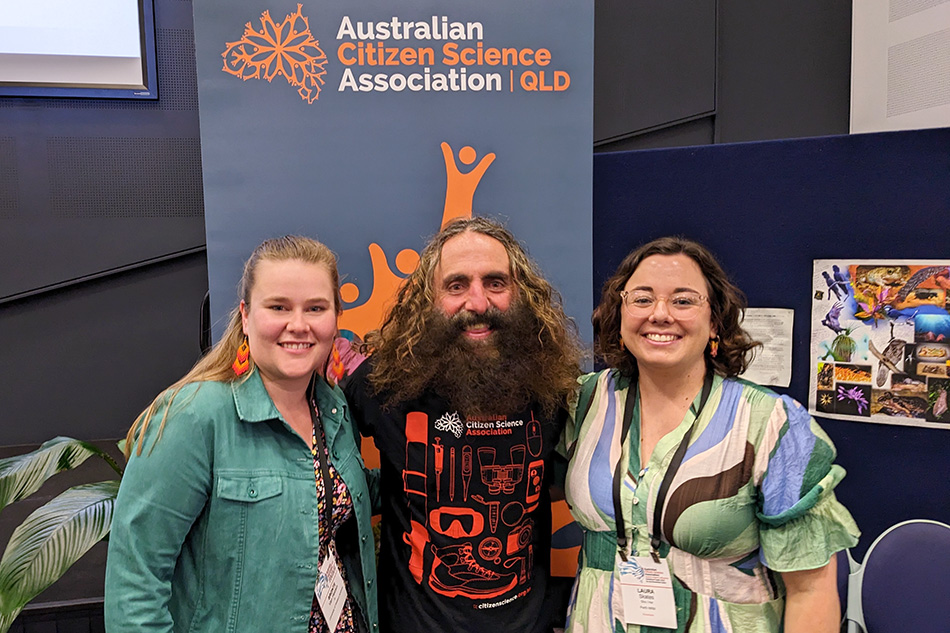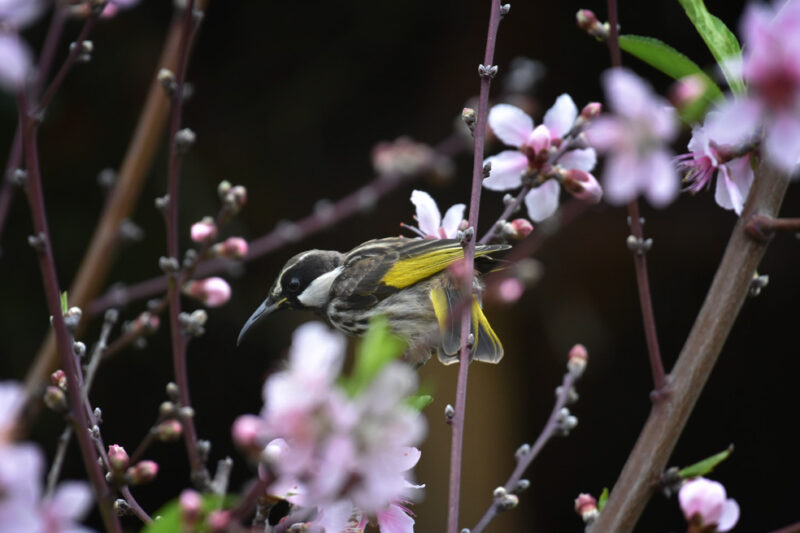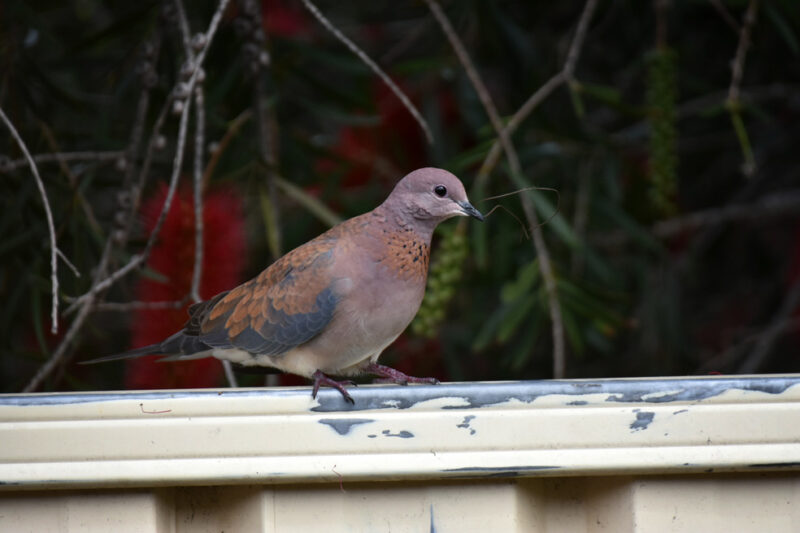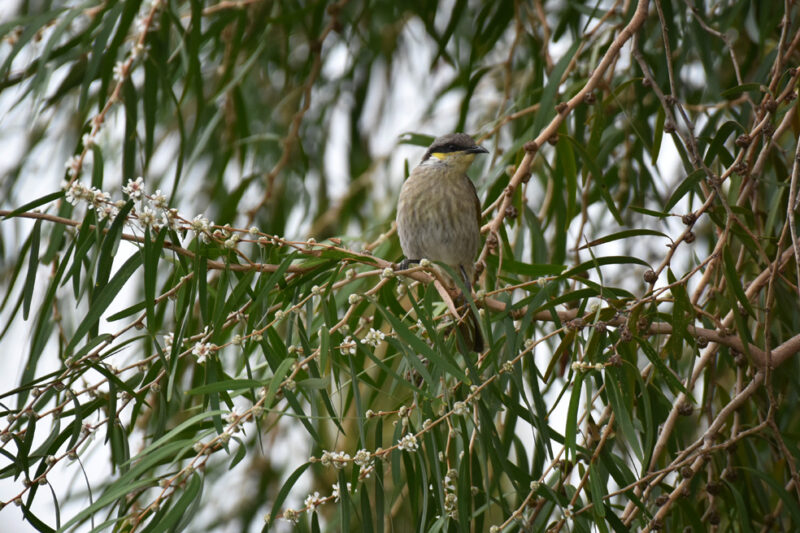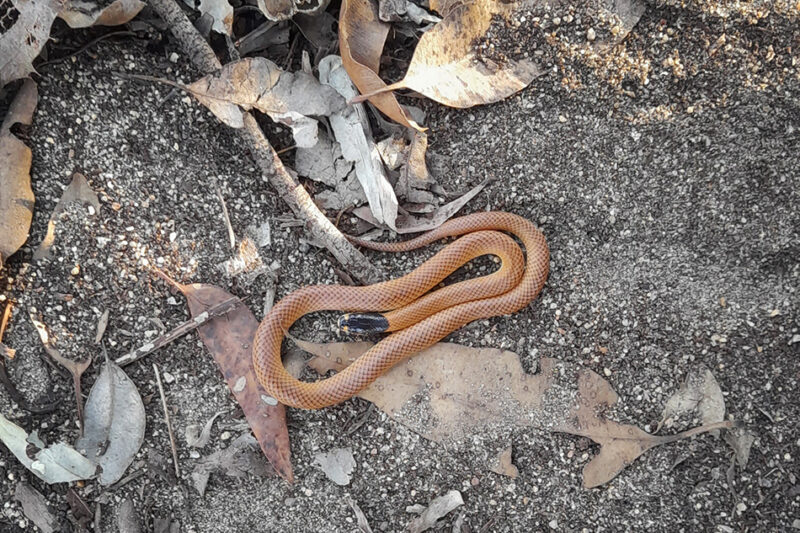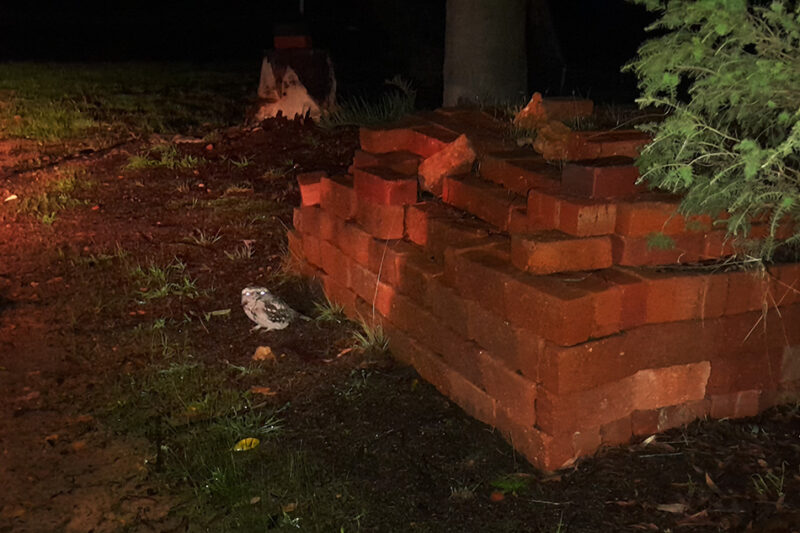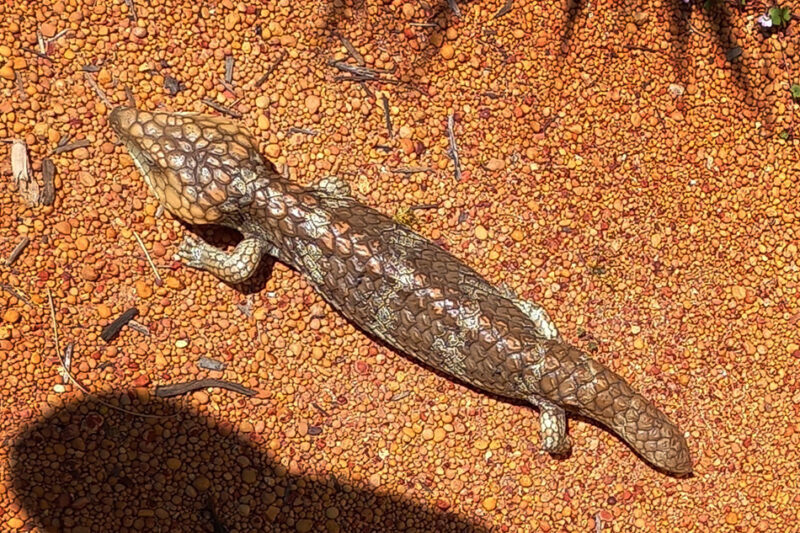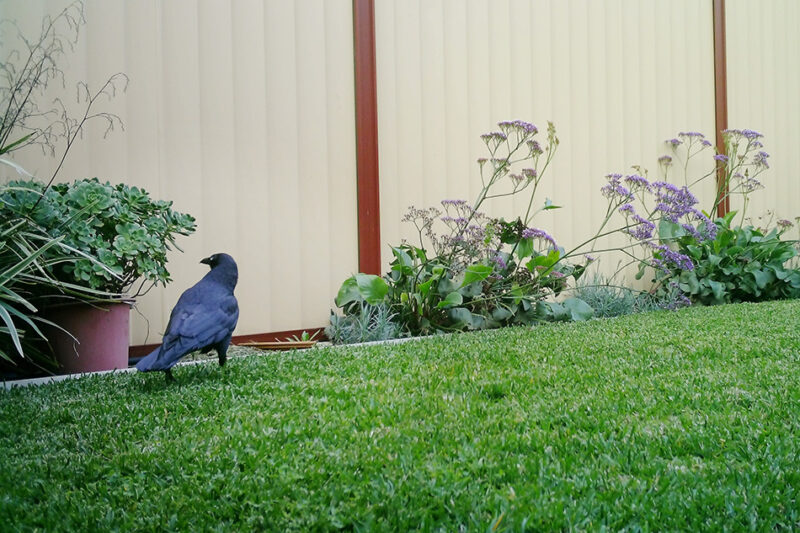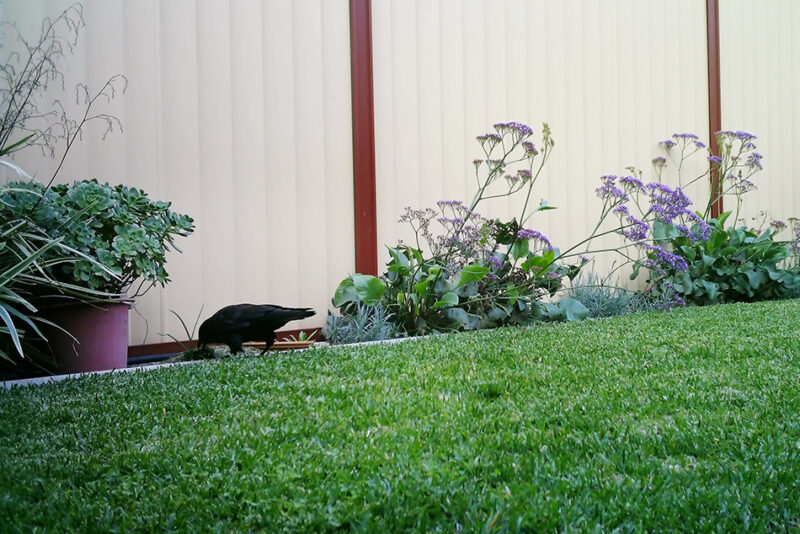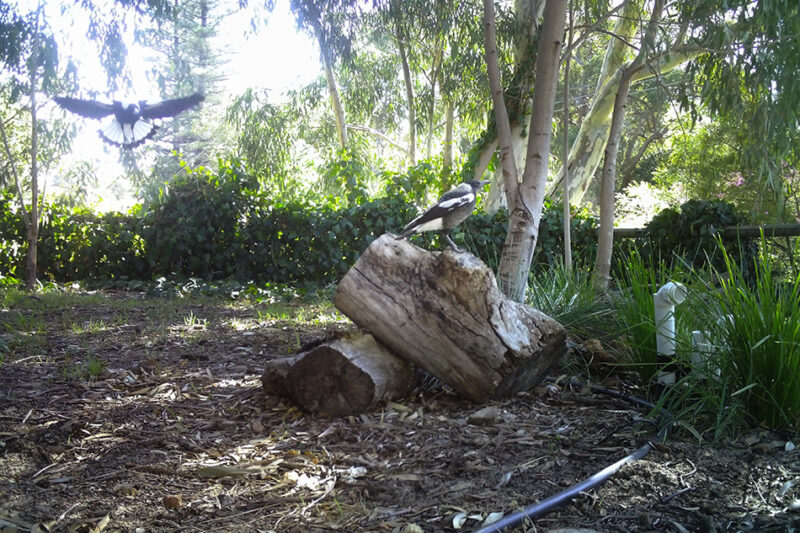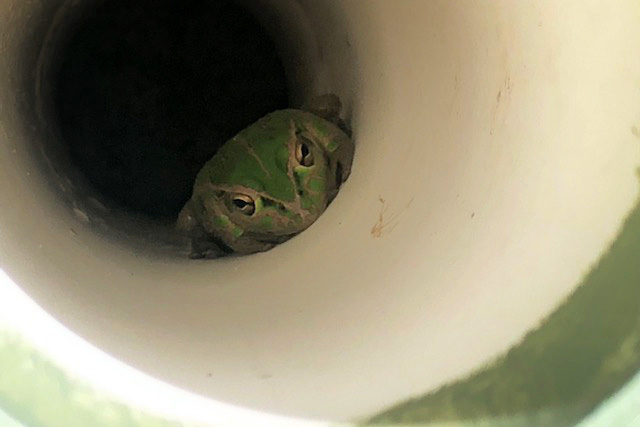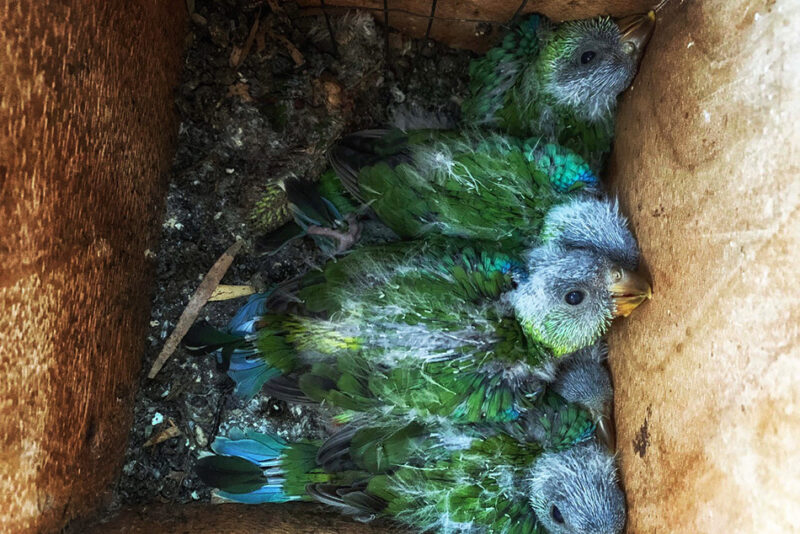What an amazing year it has been for the Turning Gardeners into Conservationists citizen science project! In this final highlight article for the year, we are celebrating with some of the amazing wildlife observations shared by citizen scientists.
These observations provide a great snapshot of how beneficial residential gardens are for native wildlife throughout the southwest of WA, and complement the systematic wildlife monitoring data that participants also submitted.
They have shown that residential gardens can provide a haven for a wide variety of wildlife – including 132 bird species, 35 reptile, 10 frog and eight mammal species. For example, citizen scientist Jacqui has spotted a variety of birds enjoying the garden, as shown below.
Residential gardens can also provide habitat for more elusive wildlife, including reptiles like the camouflaged Shingleback Lizard spotted by Glenys, the Gould’s Hooded Snake spotted by Ben, and the nocturnal tawny frogmouth also spotted by Ben.
Citizen scientists are contributing to our knowledge of what wildlife are doing in gardens when we’re not around, via images captured by camera traps. This can provide useful insights into species interactions and behaviours, even for common species like the raven (spotted by Mike) and magpies (spotted by Hannah).
Observations made by participants also showcase the benefit of wildlife-friendly structures within gardens, including bird baths, ponds, reptile shelters, nest boxes, reptile shelters, and frog hotels. Margaret spotted a motorbike frog making use of a newly installed frog hotel – it’s wonderful to see these structures being taken up by garden guests so quickly!
Along with providing resting spaces for wildlife, these structures can also provide nesting spaces! After observing six red-capped parrot chicks successfully fledge last year, Sally was excited to see another five chicks within the same nest box this year and seeing them all fledge.
Thank you to the 223 citizen scientists who have been contributing fantastic wildlife monitoring data, and for sharing their photos and observations with us. This data is providing valuable evidence for the role of residential gardens in supporting native wildlife – from providing vital water resources, to creating safe spaces for hiding, resting, nesting and breeding. Through this project, it’s clear that wildlife-friendly gardening actions can have many positive benefits to our native wildlife as well as to our own human wellbeing!
These amazing outcomes were also recently highlighted at the Australian Citizen Science Association conference on the Sunshine Coast in Queensland, in a “Citizen Science in Gardens & Backyards” session hosted by Gardening Australia’s Costa Georgiadis. Dr Bronte Van Helden (UWA Albany) and Dr Laura Skates (Perth NRM) shared preliminary results from the ecological and sociological aspects of the study, and sat on a panel alongside native bee researcher Dr Kit Prendergast and native bat researcher Robin Rowland. Thank you to Costa for the kind words and high praise for the volunteer citizen scientists involved in this project!
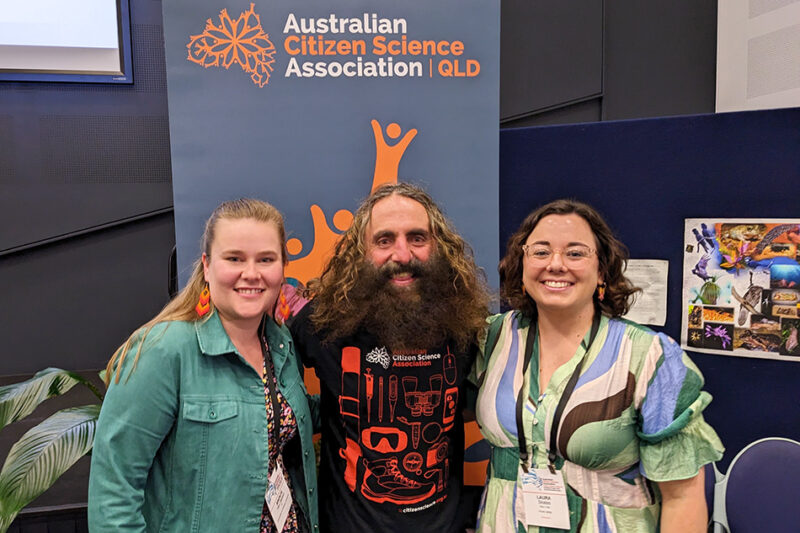
Over the next few months, the project team will be busy analysing the final dataset and compiling reports to share with citizen scientists and the wider community. Three events will be held in Perth, Bunbury and Albany in March 2024 to share the final results, and to bring all the citizen scientists together to celebrate their achievements – stay tuned on the Perth NRM Facebook and Instagram pages for event details to be shared in early 2024!
The ‘Turning Gardeners into Conservationists’ project is proudly delivered by UWA Albany and Perth NRM, through funding from the Australian Government’s Inspiring Australia Science Engagement Programme.

